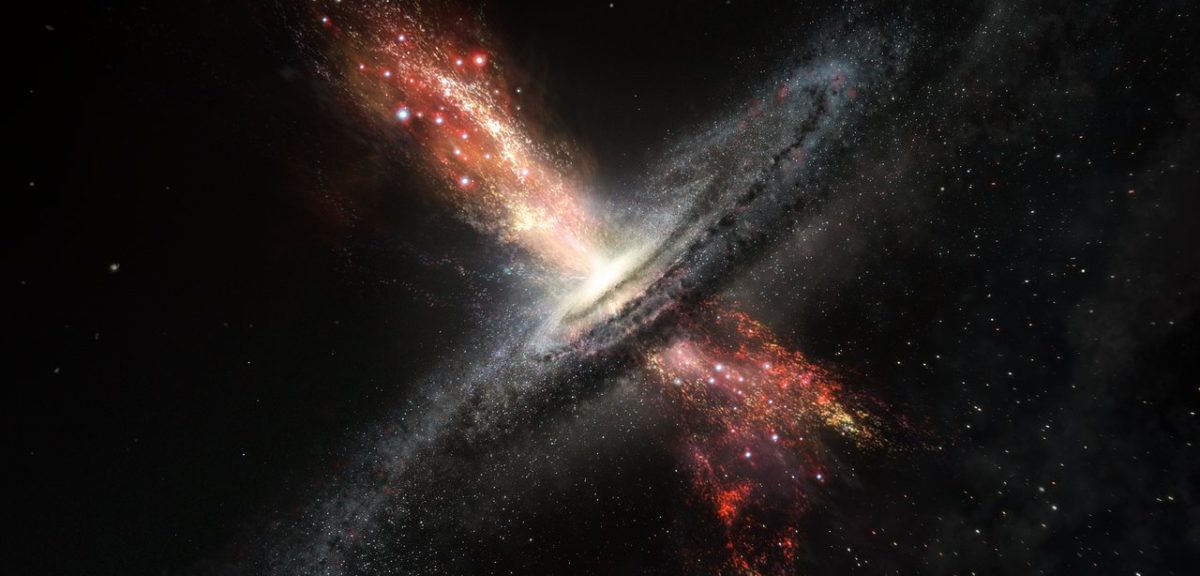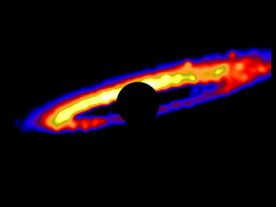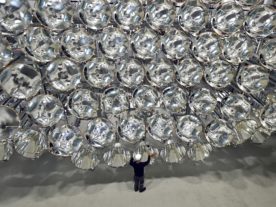
Artist’s impression of a galaxy forming stars within powerful outflows of material blasted out from supermassive black holes at its core. (ESO/M. Kornmesser)
A star being consumed by a black hole may seem quite common. But, news of stars being formed alongside a black hole could be something to notice!
But that’s just what a UK-led group of astronomers say they recently discovered.
While they were studying the ongoing collision of two galaxies, known jointly as IRAS F23128-5919, the researchers found what they say are the first confirmed observations of stars forming inside the blasts of material that pour out from a supermassive black hole located at the center of one of the galaxies.
These colliding galaxies are located about 600 million light-years from Earth.
The astronomers provide the details of their discovery and findings in a study recently published in the journal Nature.
As a black hole devours a star or other cosmic object, it heats gas in the surrounding area.
But, a black hole, despite its voracious appetite, can gobble up only so much incoming material at one time.
What remains is blown out from the abyss with powerful and dense winds, and goes on to form a ring of material surrounding the black hole called an accretion disk.
When the black hole gets hungry again, its tremendous gravity pulls material from this accretion disk into its event horizon, or the point where nothing, not even light can escape its powerful gravity.

The Multi Unit Spectroscopic Explorer (MUSE), an extremely powerful and innovative 3D spectrograph with a wide field of view is attached to ESO’s Very Large Telescope (VLT). (ESO)
The team of scientists studied the newborn stars with spectroscopic instruments called the Multi Unit Spectroscopic Explorer (MUSE) and X-shooter mounted on the Very Large Telescope (VLT) at the European Southern Observatory’s La Silla Paranal Observatory in Chile.
The researchers say the newborn stars they discovered in this turbulent environment are less than ten million years old.
An initial data analysis suggests that the stars are hotter and brighter than other stars that are born in less hostile surroundings such as in the galactic disk itself.
The scientists say they were also were able to establish the motion and velocity of the stars, noting that most of the observed newborn stars are moving away from the galaxy’s center at tremendous speed.
However, study co-author Helen Russell from the Institute of Astronomy at the UK’s University of Cambridge says new stars that form in the winds closest to the center of the galaxy might slow down in their movements, and perhaps even travel backwards toward the black hole.
She also notes that the stars formed farther out from the galactic center not only don’t decelerate, but can even fly out of the galaxy altogether.
























Comments are closed.